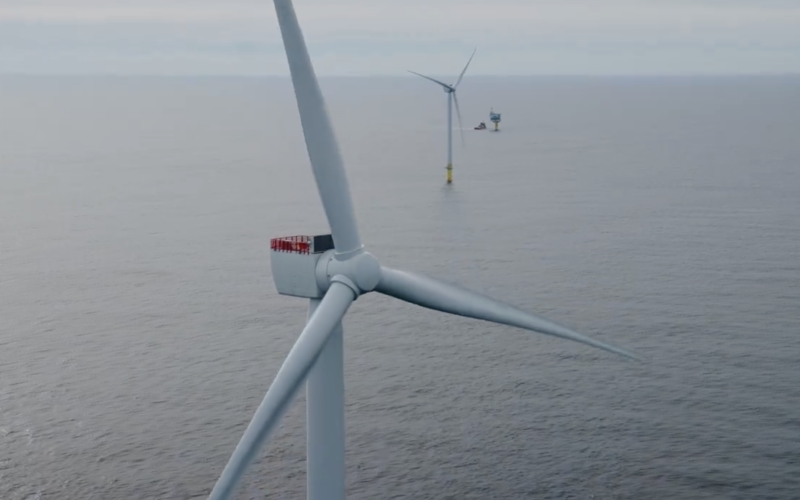South Fork Wind, an array of 12 turbines 35 miles east of Montauk, N.Y., became the first fully operational offshore wind energy project in U.S. federal waters on March 14. This milestone for the U.S. industry was one of its earliest and most bitterly fought projects.
With a maximum nameplate rating of 132 megawatts, South Fork Wind was first approved by the Long Island Power Authority in 2017. Partners Ørsted and Eversource began construction in February 2022, and completion was announced Thursday.
“When I broke ground on the South Fork project, I made a promise to build a cleaner, greener future for all New Yorkers,” said New York Gov. Kathy Hochul. With more projects in the pipeline, this is just the beginning of New York’s offshore wind future, and I look forward to continued partnership with the Biden Administration and local leaders to build a clean and resilient energy grid.”
The Hochul administration aims to have 9 gigawatts of offshore wind by 2035 and recently announced two new project awards, Empire Wind I, and Sunrise Wind, for over 1,730 MW.
Like wind industry advocates, the Hochul administration touts New York’s role in “helping stand up the foundations of a new domestic supply chain that’s creating local union jobs across the Northeast and beyond.”
South Fork turbines were staged and assembled by local union workers at the State Pier in New London, Conn., while foundation components were completed by local union workers at Ørsted and Eversource’s fabrication hub at ProvPort, R.I.
South Fork crew transfer vessels and a crew change helicopter are based out of Quonset Point, R.I. In addition to shoreside electrical and support work for local New York contractors, South Fork “features important firsts for the U.S. market, including export cables manufactured at a South Carolina plant, an offshore substation fabricated in Texas, and the first U.S. service operation vessel (SOV) that will soon launch in Louisiana,” according to the Oceantic Network, an industry nonprofit promoting renewable energy.
South Fork Wind is much smaller than the ongoing 800 MW Vineyard Wind under construction to the east. However, it continues to generate intense controversy, especially in the southern New England fishing industry.
Early on, the Rhode Island Coastal Resources Management Council called “the location of the SFW project on Cox’s Ledge, an area known for its biological diversity, is in our view one of the worst possible locations for this project.” Biologists with the National Marine Fisheries Service likewise flagged the initial plan for 15 turbines, saying the area is an important habitat for southern New England cod.
The Bureau of Ocean Energy Management and South Fork developers settled on a later plan reducing the number of turbines to 12 and shifting locations to avoid what were thought to be most critical bottom habitat for fish.
The Rhode Island-based group Green Oceans assembled a coalition of fishermen and other coastal residents to file a new federal lawsuit in January challenging BOEM’s wind energy approvals as violating a wide range of federal laws.
“Today’s announcement from Governor Hochul of New York only motivates us to redouble our efforts to protect our oceans and the life they sustain,” said Elizabeth Quattrocki Knight, co-founder and president of Green Oceans. “The government already admits they will have adverse impacts on the health of our fisheries, navigation safety, historic resources, endangered species, and environmental justice populations; yet, not a single academic study of real-world data has ever proven any benefits to climate change.”




